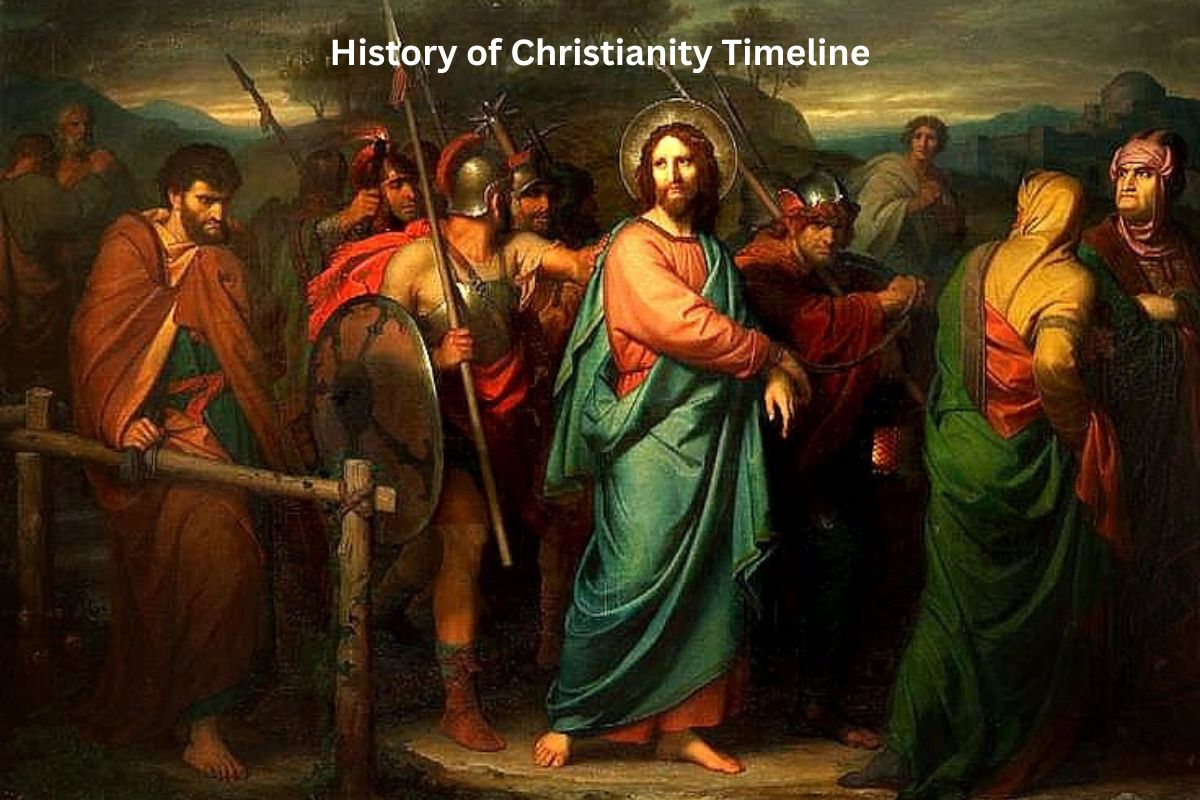The timeline of Christianity provides a chronological overview of key events and milestones in the development of the Christian faith from its origins in the 1st century CE to the present day.
It traces the spread of Christianity, theological developments, major historical turning points, and the emergence of various denominations and traditions within the Christian world.
This timeline offers a glimpse into the rich and diverse history of one of the world’s largest religions, highlighting the evolution of its beliefs, practices, and global impact.
| Century | Key Events in Christianity |
|---|---|
| 1st Century CE | c. 4 BCE – c. 30 CE: Life and ministry of Jesus of Nazareth. c. 30 CE: Crucifixion and resurrection of Jesus. c. 30-60 CE: The Apostles spread Christianity in the Roman Empire. |
| 1st-2nd Centuries CE | 50-60 CE: Writing of the earliest New Testament texts. 70 CE: Destruction of the Second Temple in Jerusalem. 2nd Century: Development of Christian communities and the emergence of Christian theology. |
| 3rd Century CE | 313 CE: Edict of Milan, which legalized Christianity in the Roman Empire under Constantine the Great. 325 CE: Council of Nicaea, addressing theological disputes and creating the Nicene Creed. |
| 4th Century CE | 380 CE: Christianity becomes the state religion of the Roman Empire under Emperor Theodosius I. 391 CE: Christianity becomes the official religion, and pagan practices are banned in the Roman Empire. 395 CE: The Roman Empire splits into the Eastern and Western Roman Empires. |
| 5th-7th Centuries CE | 410 CE: Sack of Rome by the Visigoths. 451 CE: Council of Chalcedon, defining Christology. 590-604 CE: Papacy of Pope Gregory I (Gregory the Great). 7th Century: Spread of Christianity in Europe and the Middle East. |
| 8th-10th Centuries CE | 732 CE: Battle of Tours, halting the Muslim advance into Western Europe. 800 CE: Charlemagne crowned Holy Roman Emperor by Pope Leo III. 9th-10th Centuries: Eastern and Western Christianity (Eastern Orthodoxy and Roman Catholicism) continue to diverge. |
| 11th-13th Centuries CE | 1054 CE: The Great Schism, formalizing the split between the Roman Catholic Church and the Eastern Orthodox Church. 1096-1291 CE: The Crusades. 1215 CE: Fourth Lateran Council, significant for church reforms. |
| 14th-16th Centuries CE | 14th Century: The Black Death and its impact on Europe. 1517 CE: Martin Luther’s Ninety-Five Theses, sparking the Protestant Reformation. 1534 CE: Henry VIII’s Act of Supremacy, establishing the Church of England. |
| 17th-19th Centuries CE | 17th Century: The Age of Religious Wars and the Peace of Westphalia. 18th Century: The Enlightenment and secularization. 19th Century: The spread of Christianity through missionary work. |
| 20th Century-Present | 1962-1965: Second Vatican Council, modernizing Catholicism. Late 20th Century: Rise of evangelical and charismatic movements. 21st Century: Globalization of Christianity, with growth in Africa, Asia, and Latin America. |
Timeline of the History of Christianity
1st Century CE:
c. 4 BCE – c. 30 CE: Life and ministry of Jesus of Nazareth:
This period marks the life and teachings of Jesus Christ, the central figure of Christianity. He preached about love, forgiveness, and the Kingdom of God, attracting followers known as disciples.
c. 30 CE: Crucifixion and resurrection of Jesus:
Jesus was crucified by Roman authorities, leading to his death. Christians believe that he was resurrected three days later, signifying victory over death and sin. This event, known as the Resurrection, is a fundamental belief in Christianity.

c. 30-60 CE: The Apostles spread Christianity in the Roman Empire:
Following Jesus’s death and resurrection, his disciples, known as the Apostles, played a crucial role in spreading Christianity. They traveled throughout the Roman Empire, preaching and establishing Christian communities.
Also Read: Paul’s Missionary Journey Timeline
The Apostle Paul, in particular, made significant contributions through his missionary journeys and epistles.
1st-2nd Centuries CE:
50-60 CE: Writing of the earliest New Testament texts:
During this period, various books and letters of the New Testament were written. These texts include the Gospels (Matthew, Mark, Luke, and John) and the letters (epistles) written by early Christian leaders such as Paul, Peter, and John. These writings became essential for Christian doctrine and practice.
70 CE: Destruction of the Second Temple in Jerusalem:
The destruction of the Second Temple by Roman forces in 70 CE had significant implications for Judaism and Christianity. It marked the end of the Jewish sacrificial system and influenced the development of early Christian theology.
2nd Century: Development of Christian communities and the emergence of Christian theology:
During the 2nd century, Christian communities continued to grow and develop. Theological discussions arose, addressing questions about the nature of Christ, the Trinity, and the relationship between the Old and New Testaments.
Also Read: Prophets in the Old Testament Timeline
Early Christian apologists like Justin Martyr defended Christianity against its critics, contributing to the formation of Christian theology.
3rd Century CE:
313 CE: Edict of Milan: In 313 CE, Emperor Constantine the Great issued the Edict of Milan, which legalized Christianity within the Roman Empire. This marked a significant turning point for the faith, as it transitioned from being persecuted to being accepted and supported by the state.
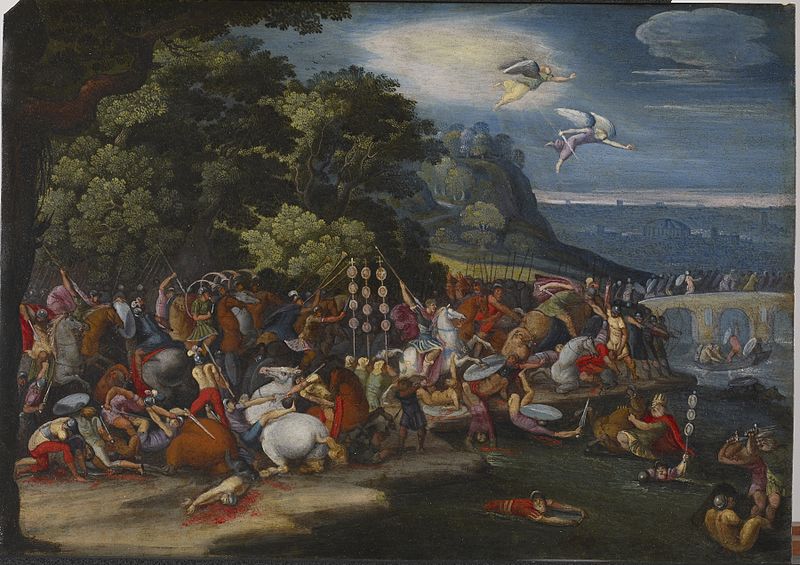
325 CE: Council of Nicaea: The First Council of Nicaea was convened to address theological controversies, particularly the Arian heresy, which denied the full divinity of Christ.
The council produced the Nicene Creed, affirming the doctrine of the Trinity and the divinity of Jesus Christ. The Nicene Creed remains a central statement of Christian faith.
4th Century CE:
380 CE: Christianity becomes the state religion of the Roman Empire under Emperor Theodosius I:
The Roman Emperor Theodosius I issued the Edict of Thessalonica, also known as the “Cunctos populos” decree, in 380 CE. This edict declared Christianity, specifically Nicene Christianity, as the official state religion of the Roman Empire.
It marked a significant shift in the status of Christianity from being tolerated to being actively promoted and supported by the government.
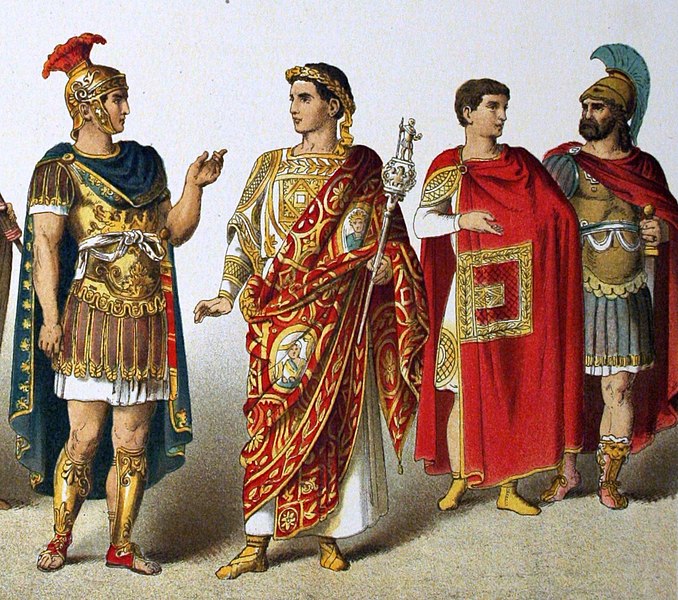
391 CE: Christianity becomes the official religion, and pagan practices are banned in the Roman Empire:
Under Emperor Theodosius I, Christianity gained further prominence as the official and preferred religion of the Roman Empire. The emperor also issued decrees that prohibited pagan practices and closed pagan temples, leading to the decline of traditional Roman polytheism.
395 CE: The Roman Empire splits into the Eastern and Western Roman Empires:
With the death of Emperor Theodosius I, the Roman Empire was divided into the Eastern Roman Empire (Byzantine Empire) and the Western Roman Empire.
This division had significant implications for the development of Christianity, as the Eastern and Western branches of the Church gradually grew apart, leading to doctrinal and cultural differences.
5th-7th Centuries CE:
410 CE: Sack of Rome by the Visigoths:
In 410 CE, the Visigoths, under King Alaric, sacked the city of Rome. This event shocked the Roman world and had implications for the Christian Church in the West, as it marked the decline of Rome as the political center of the Western Roman Empire.
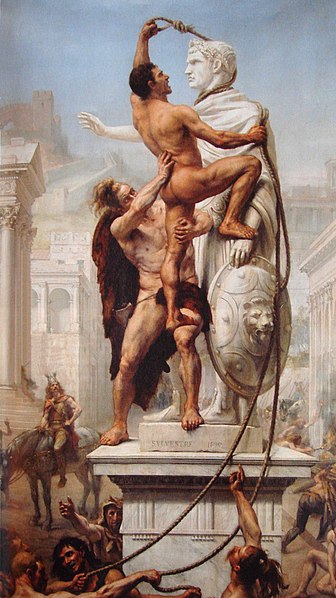
451 CE: Council of Chalcedon:
The Council of Chalcedon was convened to address Christological controversies. It produced the Chalcedonian Creed, affirming the orthodox position that Jesus Christ had two distinct natures (divine and human) united in one person.
This creed became a central statement of faith for the Eastern Orthodox and many Western Christian traditions.
590-604 CE: Papacy of Pope Gregory I (Gregory the Great):
Pope Gregory I, also known as Gregory the Great, played a crucial role in shaping the papacy and the medieval Church.
He expanded the authority of the papacy, reformed liturgical practices, and established the concept of papal primacy. His theological and administrative contributions had a lasting impact on the Catholic Church.
7th Century: Spread of Christianity in Europe and the Middle East:
During the 7th century, Christianity continued to spread to new regions, including northern Europe and parts of the Middle East. Missionary efforts, such as those of Saint Augustine of Canterbury in England, contributed to the Christianization of previously pagan areas.
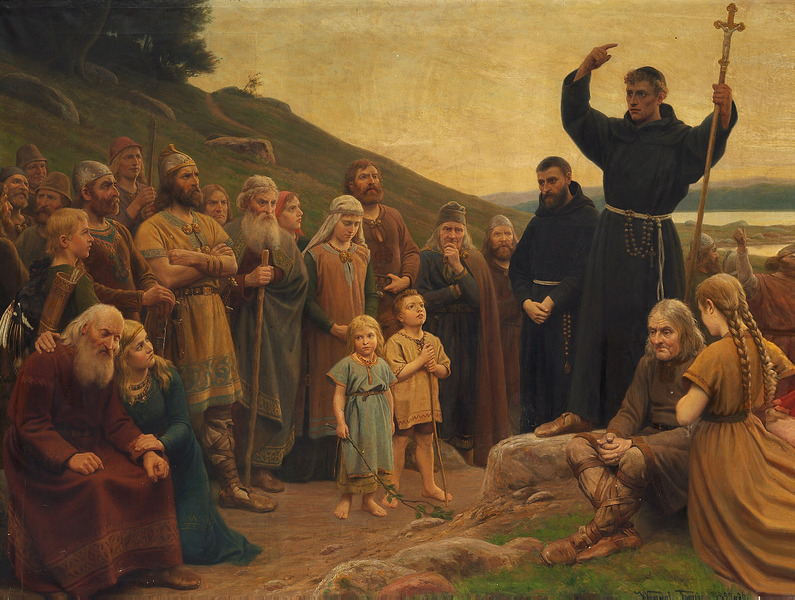
8th-10th Centuries CE:
732 CE: Battle of Tours:
The Battle of Tours, also known as the Battle of Poitiers, was a decisive conflict in which Frankish forces, led by Charles Martel, halted the Muslim advance into Western Europe. This battle is considered significant in European history and had implications for the spread of Christianity in Western Europe.
800 CE: Charlemagne crowned Holy Roman Emperor by Pope Leo III:
The crowning of Charlemagne as Holy Roman Emperor by Pope Leo III marked the revival of the Western Roman Empire in a new form, known as the Holy Roman Empire. It also emphasized the close relationship between the Church and political power in medieval Europe.
9th-10th Centuries: Eastern and Western Christianity divergence:
During this period, doctrinal and cultural differences between Eastern Orthodoxy and Roman Catholicism continued to grow. These differences ultimately contributed to the Great Schism of 1054, which formalized the split between the two branches of Christianity.
11th Century CE:
1054 CE: The Great Schism:
This pivotal event marked the formal split between the Eastern Orthodox Church and the Roman Catholic Church. It was primarily over issues of theological differences and the authority of the Pope in Rome. The schism created two distinct Christian traditions, Eastern Orthodoxy and Roman Catholicism.

Late 11th Century: The Crusades:
The Crusades were a series of religiously motivated military campaigns by Western European Christians to recapture the Holy Land from Muslim rule. They had profound religious, political, and cultural implications and contributed to interactions between Christian and Islamic civilizations.
12th Century CE:
The Crusades Continue:
Crusader states were established in the Holy Land during the 12th century, including the Kingdom of Jerusalem. However, these states faced challenges from Muslim forces, and the overall success of the Crusades remained mixed.
12th Century Renaissance:
The 12th century saw a revival of learning and culture in Europe, often referred to as the 12th-century Renaissance. Monasteries played a significant role in preserving and transmitting classical knowledge and fostering intellectual pursuits.
13th Century CE:
1215 CE: Fourth Lateran Council:
This important council, convened by Pope Innocent III, addressed various issues within the Catholic Church. It reaffirmed key doctrines such as transubstantiation, established rules for papal elections, and promoted church reforms.
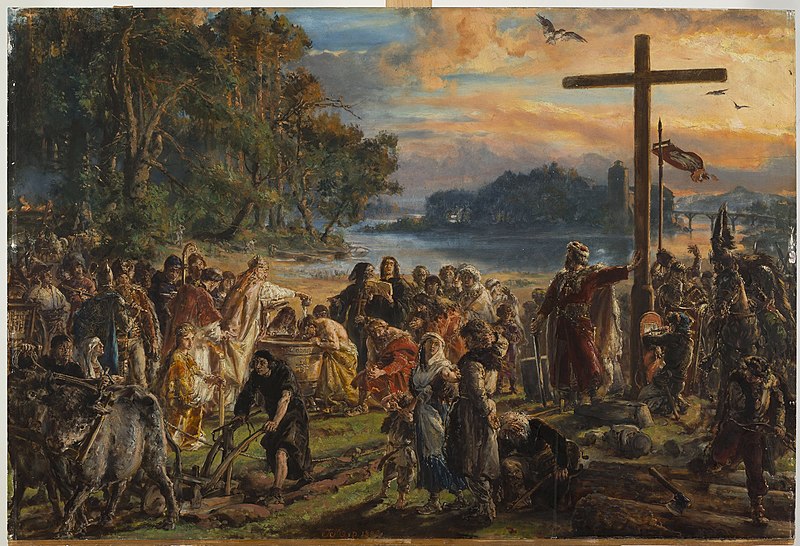
13th Century Theologians:
The 13th century saw the emergence of influential theologians like Thomas Aquinas, who sought to reconcile Christian theology with the philosophy of Aristotle. Aquinas’s work, particularly the “Summa Theologica,” had a profound and lasting impact on Catholic theology.
Late 13th Century: Decline of Crusader States:
By the end of the 13th century, many of the Crusader states in the Holy Land had fallen to Muslim forces, marking the decline of Christian presence in the region.
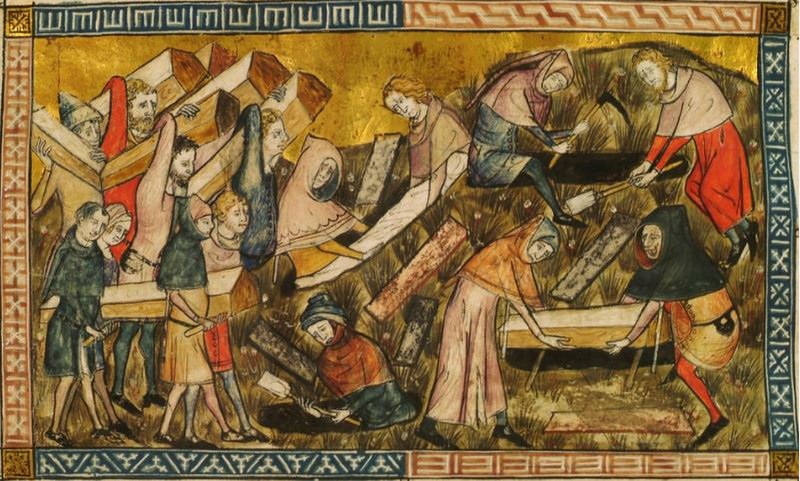
14th Century CE:
The Black Death:
The 14th century was marked by the devastating pandemic known as the Black Death, which swept through Europe, causing immense suffering and loss of life. This catastrophic event prompted deep theological and philosophical reflections on the nature of suffering, death, and the role of the Church.
John Wycliffe:
In England, John Wycliffe emerged as a prominent figure challenging the authority of the Roman Catholic Church. He advocated for the translation of the Bible into vernacular languages, criticized church corruption, and laid the groundwork for later Protestant reformers.
15th Century CE:
Renaissance and Humanism:
The Renaissance, a cultural and intellectual movement, had a significant impact on the Church during the 15th century. Humanist scholars focused on the study of classical texts and promoted a revival of classical learning, which influenced the fields of theology and biblical studies.
Hussite Movement:
In Bohemia, Jan Hus led a reformist movement that criticized various practices of the Catholic Church, including the sale of indulgences. His teachings and martyrdom at the Council of Constance (1415) foreshadowed the Protestant Reformation.
16th Century CE:
Martin Luther and the Protestant Reformation:
In 1517, Martin Luther, a German monk, posted his Ninety-Five Theses on the door of the Castle Church in Wittenberg. This act ignited the Protestant Reformation, a religious and theological movement that challenged the authority of the Roman Catholic Church.
Luther’s ideas, including justification by faith alone and the priesthood of all believers, led to the emergence of various Protestant denominations.
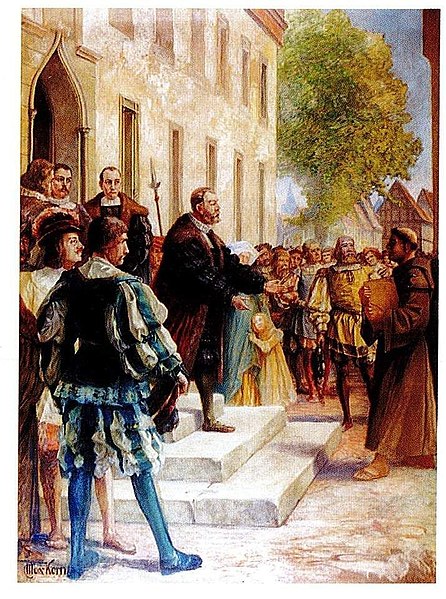
Reformation Leaders:
Luther’s influence was followed by other reformers such as John Calvin, who developed Reformed theology, and Huldrych Zwingli, who played a significant role in the Swiss Reformation. These reformers and their followers sought to reform and reshape Christian doctrine and practice.
The English Reformation:
In England, King Henry VIII’s desire for an annulment led to the Act of Supremacy in 1534, establishing the Church of England (Anglicanism) with the monarch as its head. This marked the English Reformation and the separation from the authority of the Pope in Rome.
Council of Trent:
The Catholic Church responded to the Protestant Reformation with the Council of Trent (1545-1563). This council addressed theological and administrative issues, reaffirmed Catholic doctrine, and initiated various reforms within the Catholic Church.
The 17th to the 19th centuries CE were marked by significant developments and transformations within Christianity:
17th Century CE:
The Age of Religious Wars:
The 17th century was a period of intense religious conflict in Europe, including the Thirty Years’ War (1618-1648) and the English Civil War (1642-1651). These wars were fueled by religious differences and political power struggles, leading to considerable religious and social upheaval.
Peace of Westphalia (1648):
The Peace of Westphalia, which ended the Thirty Years’ War, is seen as a landmark in international diplomacy. It recognized the principle of cuius regio, eius religio (“whose realm, his religion”), allowing rulers to choose the religion of their territories. This treaty helped to establish the concept of state sovereignty and religious tolerance.
18th Century CE:
The Enlightenment:
The 18th century was marked by the Enlightenment, an intellectual movement that emphasized reason, individualism, and secularism. Enlightenment thinkers questioned traditional religious beliefs and institutions, contributing to the secularization of European society.
Missionary Work:
Despite the challenges of the Enlightenment, missionary efforts continued, with Christian organizations sending missionaries to various parts of the world. This period saw the expansion of Christianity into Africa, Asia, and the Americas.
19th Century CE:
Second Great Awakening:
In the United States, the 19th century witnessed the Second Great Awakening, a religious revival movement characterized by passionate preaching, emotional conversions, and a focus on personal piety. It had a profound impact on American Christianity, leading to the growth of evangelical and revivalist movements.
Spread of Christianity:
The 19th century saw significant growth in Christianity, particularly through missionary activities. Missionaries played a key role in spreading Christian faith to regions such as sub-Saharan Africa, Southeast Asia, and the Pacific Islands.
Modernism and Liberal Theology:
The 19th century also saw the rise of modernism and liberal theology within some Christian denominations. These movements sought to reconcile Christian beliefs with contemporary knowledge and emphasized a more inclusive and less dogmatic approach to faith.
Papal Infallibility and Vatican I:
In 1870, the First Vatican Council affirmed the doctrine of papal infallibility, asserting that under certain conditions, the Pope is considered infallible when defining matters of faith and morals. This declaration had significant implications for the authority of the papacy within the Roman Catholic Church.
20th Century:
Second Vatican Council (1962-1965):
The Second Vatican Council, convened by Pope John XXIII, sought to modernize and reform the Roman Catholic Church. It led to changes in liturgy, ecumenical outreach, and a more inclusive approach to other Christian traditions and religions.
Rise of Evangelical and Charismatic Movements:
The 20th century witnessed the growth of evangelical Christianity and the charismatic movement. These movements emphasized personal religious experiences, vibrant worship, and a focus on evangelism.
Globalization of Christianity:
The 20th century marked the globalization of Christianity, with significant growth in Africa, Asia, and Latin America. These regions saw the emergence of vibrant Christian communities and the development of indigenous Christian theologies.
21st Century:
Continued Globalization:
Christianity continues to expand in regions such as Africa, Asia, and Latin America. These areas have become centers of Christian growth and innovation, with new theological perspectives and practices.
Interfaith Dialogue:
The 21st century has seen increased efforts in interfaith dialogue, with Christians engaging in conversations with followers of other religions, including Islam, Judaism, and Buddhism. These dialogues seek mutual understanding and cooperation on common issues.
Challenges to Traditional Beliefs:
Christianity faces challenges in the form of secularization, declining church attendance in some Western countries, and debates over social and moral issues such as LGBTQ+ rights and women’s ordination.
Technology and Media:
The digital age has brought new opportunities and challenges for Christianity. Churches use technology for worship, communication, and outreach, while also grappling with issues related to online ministry and ethics.
Contemporary Theological Debates:
Theological discussions in the 21st century include topics such as environmental ethics, social justice, and the role of Christianity in addressing global challenges like poverty and climate change.
